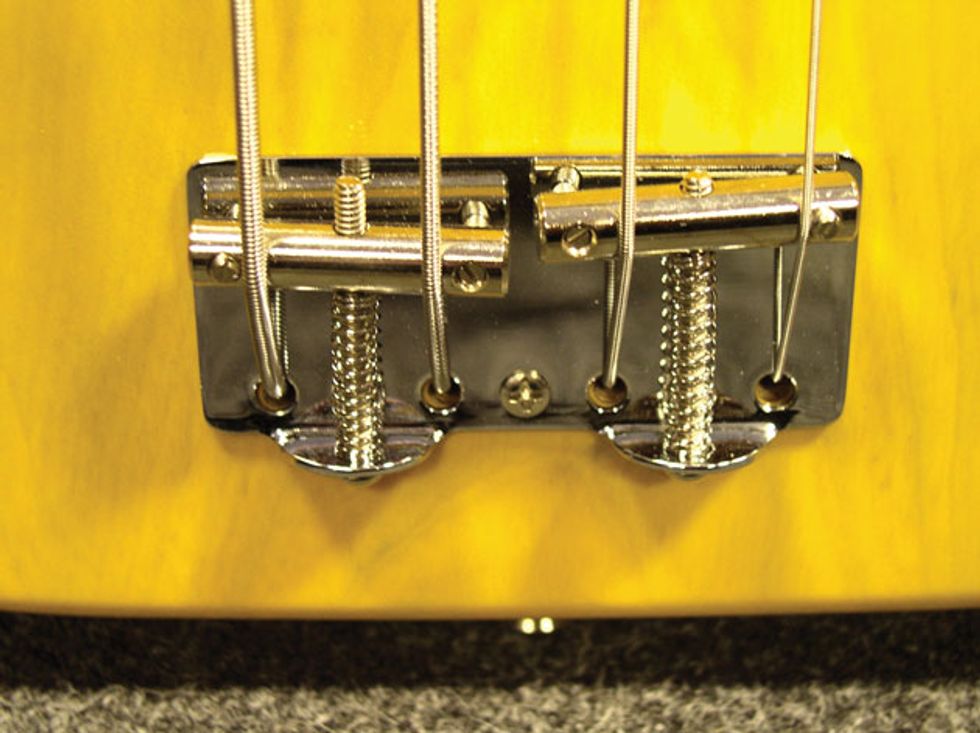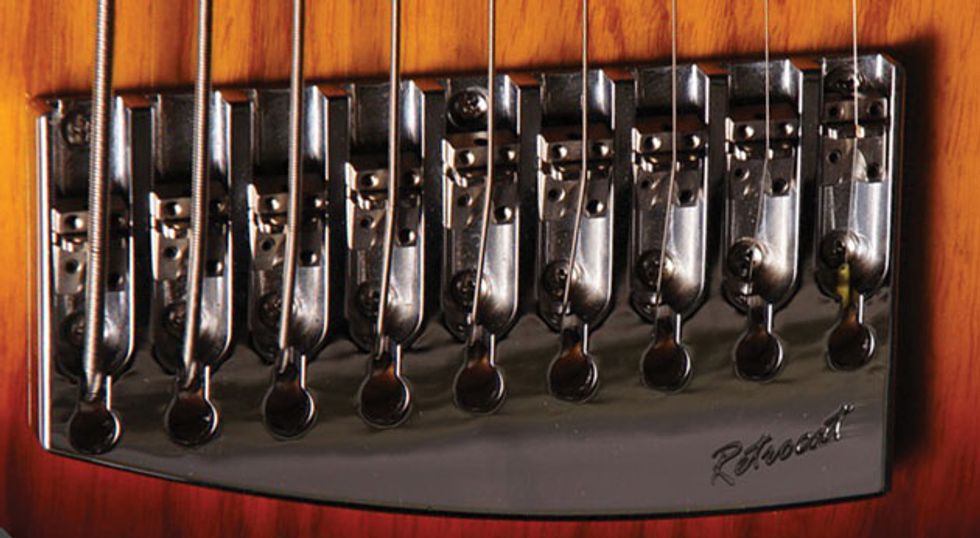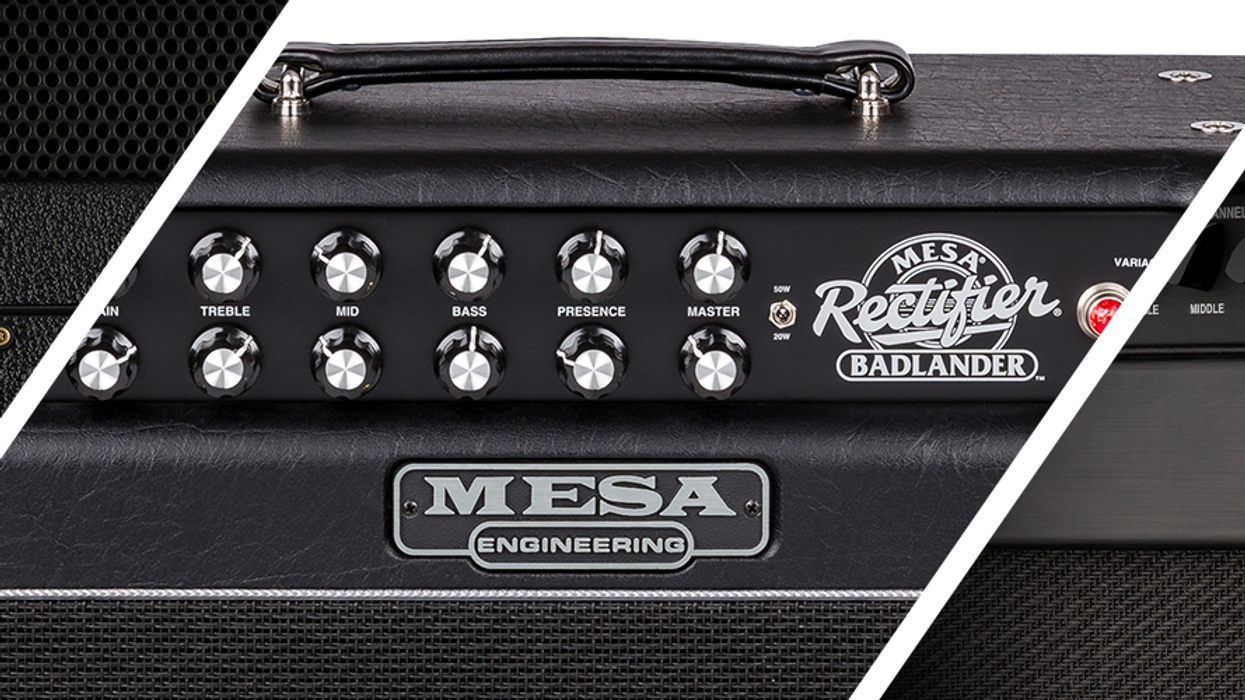Photo by Frank Behnsen.
The one part of our beloved bass that has seen the most design changes over time is the bridge. Unlike the nut, which only influences the tone of open strings, the bridge is the sole contact point that affects all notes. That’s a significant role for any piece of hardware. To understand what to expect from a modern bridge, let’s investigate different bridge concepts and look at how bridge design has evolved over time.
When you compare a 1951 Precision bass bridge (Photo 1) to a modern design, you find the same pattern of change that has impacted many other bass components. Even a quick glance at today’s instruments reveals the enhanced role bassists play in modern music. That said, the first P-bass bridge offered a huge amount of adjustability—string height and intonation—compared to the bridge on an upright bass. Of course, acoustic instruments require different construction because you want to avoid heavy metal parts weighing down those light, resonant tops. That’s why light, simple bridges are still found on the most acoustic basses. Weight can also be critical for most hollowbody electrics.
But there’s no need to save weight on a solidbody, at least from a sonic perspective. This explains why the very first fretted electric bass (the 1933 Audiovox Model #736 Bass Fiddle created by Paul H. Tutmarc) had a non-adjustable metal bridge.
Later, many manufacturers—and by extension, bassists—promoted high-mass bridges for better low end and increased adjustability. Gibson bass bridges are a good example of this trend, starting with the EB-1 in 1953 and leading to the early ’80s Grabber. This evolution started with a simple bar bridge with height adjustment at each side and rough intonation adjustment via two small hex screws. The 1960 Thunderbird bridge was Gibson’s first to offer individual string intonation. The 1981 Victory bass came with the Tri-4 Wedge bridge, Gibson’s first with 3D adjustability (forward and backward, up and down, and left and right).
Height and length adjustments for each string are all you need to set intonation and action, yet the option of moving strings sideways to alter their spacing is intriguing. In theory, you have the ability to choose between two possible spacing schemes: equal distances (center-to-center) or equal gaps between the strings. As flexible as this may sound, I doubt many players take advantage of it.
Today we see a huge array of bridge designs. While most offer the same functionality, their usability varies. Did you take a close look at the bridge when you bought your most recent bass? I’ve rarely seen anyone fiddle with the setup possibilities in a music store before buying an instrument. And that’s understandable, given that the average user doesn’t constantly readjust the bridge. Still, a less sophisticated bridge design can present unfortunate surprises. Example: Breaking a string onstage is bad enough, but losing loose parts is worse. Also, a good design lets you access all adjustments with minimal tools. A small Allen wrench fits in every pocket. Having to carry several sizes plus a screwdriver is less handy.
Photo courtesy ETS Hardware (ets-hardware.com)
A few more issues to ponder: A locked saddle can be prone to changes caused by vibration—something we hopefully have a lot of. Separate locks for each saddle can save you from accidentally altering others. Some designs use fewer screws for a cleaner look, but then mix a screw’s functionality. This can lead to a situation where adjusting height also affects intonation. A sharply angled string (as seen on many string-through-body models) puts so much pressure on the saddle that you must completely loosen the string before adjusting anything. Tune back to pitch, check your adjustment, loosen the string again, make another adjustment ... well, you get the idea.
Carefully examining the bridge before you purchase your next bass can ultimately save you a lot of time and let you focus on playing. Could this be why so many players remain satisfied with the simple Fender bridge design, which gives you access to all functions and just works?
There’s more to this story, especially when it comes to bridges on extended-range instruments (Photo 2). It’s worth taking a look at the ideas behind these special constructions—and that’s what we’ll do next time.









![Rig Rundown: AFI [2025]](https://www.premierguitar.com/media-library/youtube.jpg?id=62064741&width=1245&height=700&quality=70&coordinates=0%2C0%2C0%2C0)












 Shop Scott's Rig
Shop Scott's Rig















































